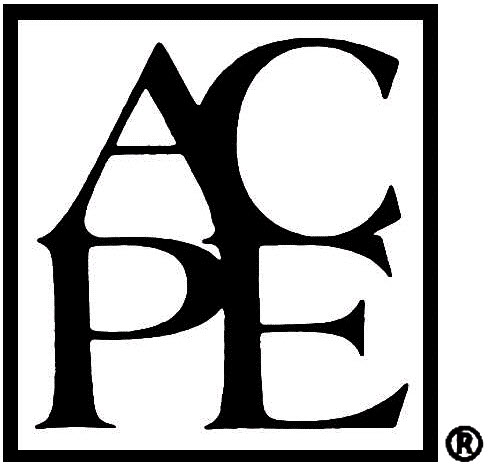Acetaminophen Poisoning and Treatment
Pain Management/Opioids CE for Pharmacists
Are you a Pharmacy Tech? Check out the Pharmacy Tech version of this course.
Course Summary
The leading cause of acute liver failure in the United States and other developed countries is the intentional or accidental overdose of the common over-the-counter medication acetaminophen. An overdose of acetaminophen not only causes liver damage but, in rare instances, can cause renal and other organ system damage as well. Healthcare teams that are prepared with the appropriate knowledge and skill to recognize acetaminophen poisoning and provide the appropriate diagnostic and treatment steps can help to save a person from significant physical harm. After a chronic overdose, the toxic dose of acetaminophen depends on how long the patient has been taking the drug and the presence of risk factors. The use of the Rumack-Matthew nomogram helps to determine whether acute acetaminophen ingestion can be expected to be toxic or non-toxic. In chronic acetaminophen use, a serum level should be measured to determine the need for treatment. The standard treatment for acetaminophen overdose is N-acetylcysteine, and if patients are treated appropriately and promptly, the prognosis is typically good. Hemodialysis may be used as a treatment option and in severe cases liver transplantation may be needed.
Describe the pharmacology of acetaminophen
Identify the prevalence and circumstances that give rise to acetaminophen poisoning
Describe the criteria for diagnosing acetaminophen poisoning
Describe treatment guidelines for acetaminophen overdose
Course Syllabus
I. Introduction
II. Acetaminophen Use and Incidence of Overdose
III. Acetaminophen Pharmacology
IV. Acetaminophen Dosing and Available Forms
1. Acetaminophen Dosing
2. Available Forms of Acetaminophen
3. Contraindications
4. Adverse Effects
5. Drug-Drug/Drug-Disease Interactions
V. Acetaminophen Toxicity
Therapeutic Dose and Potential Toxicity
VI. Clinical Presentation of Acetaminophen Poisoning
1. Phase I
2. Phase II
3. Phase III
4. Phase IV
VII. Acetaminophen Overdose and Organ Damage
1. Liver Damage
2. Renal Damage
3. Other Organ Damage
VIII. Acute Acetaminophen Overdose
1. Acetaminophen Toxic Dose and Time of Ingestion
2. Measuring Acetaminophen Serum Levels
3. Signs and Symptoms of Acetaminophen Toxicity
IX. Initial Treatment for Acetaminophen Overdose
1. Gastric Decontamination
2. Antidotal Therapy: N-Acetylcysteine
3. Modes of Administration
4. Hemodialysis
X. The Roles of Pharmacists and Pharmacy Technicians in Preventing Acetaminophen Overdose
XI. Summary
- Read the course objectives and faculty planner disclosure
- Read the course material
- Complete the post-test with a minimum score of 70% and complete the course evaluation form.
- Results are automatically submitted to CPE Monitor
Faculty Planner Disclosure
The following individuals were involved in the development of this activity: Susan DePasquale, MSN, PMHNP-BC, Amanda Mayer, PharmD, and Jeff Goldberg, PharmD, BCPP. There are no financial relationships relevant to this activity to report or disclose by any of the individuals involved in the development of this activity.
Unlabeled Use Disclosures
The information provided in this course is general in nature and it is solely designed to provide participants with continuing education credit(s). This course and materials are not meant to substitute for the independent, professional judgment of any participant regarding that participant’s professional practice, including but not limited to patient assessment, diagnosis, treatment and/or health management. Medical and pharmacy practices, rules, and laws vary from state to state, and this course does not cover the laws of each state; therefore, participants must consult the laws of their state as they relate to their professional practice. Healthcare professionals, including pharmacists and pharmacy technicians, must consult with their employer, healthcare facility, hospital, or other organization, for guidelines, protocols, and procedures they are to follow. The information provided in this course does not replace those guidelines, protocols, and procedures but is for academic purposes only, and this course’s limited purpose is for the completion of continuing education credits. Participants are advised and acknowledge that information related to medications, their administration, dosing, contraindications, adverse reactions, interactions, warnings, precautions, or accepted uses are constantly changing, and any person taking this course understands that such person must make an independent review of medication information prior to any patient assessment, diagnosis, treatment and/or health management. Any discussion of off-label use of any medication, device, or procedure is informational only and such uses are not endorsed hereby. Nothing contained in this course represents the opinions, views, judgments, or conclusions of RxCe.com LLC. RxCe.com LLC is not liable or responsible to any person for any inaccuracy, error, or omission with respect to this course, or course material.
Computer Hardware/Software Requirements
Please ensure the device you plan to use meets these requirements and specifications:
- Operating System: Windows 7,8,10, or 11 /Mac OS X 10.9 or later/iOS/Android
- Supported Browsers: Microsoft Edge, Firefox, Google Chrome, Safari, Opera
- A connection to the internet
- For Live Webinars or Conferences: GoToWebinar application for iOS, Android, Mac, or PC. You cannot 'call into' a live conference.
Rating: 4.94/5
Based on the ratings of 739 customers
- Target Audience: Pharmacist
- Secondary Audiences: This educational activity is also for other healthcare professionals, such as nurses, physicians, or others who may be part of a healthcare team and may be interested in this educational topic. A healthcare team approach to patient care may be discussed in this activity, as applicable. No state board or professional organization has evaluated this activity to determine whether it meets the continuing education requirements of nurses, physicians, or other professions not listed under the “Target Audience” described above. Always verify with individual employers or supervisors whether they will accept this educational activity upon completion.
- Contact Hours: 1.5 (0.15 CEUs)
- Activity Release Date: 2/22/2022
- Activity Expiration Date: 2/22/2025
- Activity Type: Knowledge
- UAN: 0669-0000-22-043-H08-P
- Topic: Pain Management/Opioids
- CeBroker Number: 20-955984
Faculty:

RxCe.com, LLC is accredited by the Accreditation Council for Pharmacy Education as a provider of continuing pharmacy education.